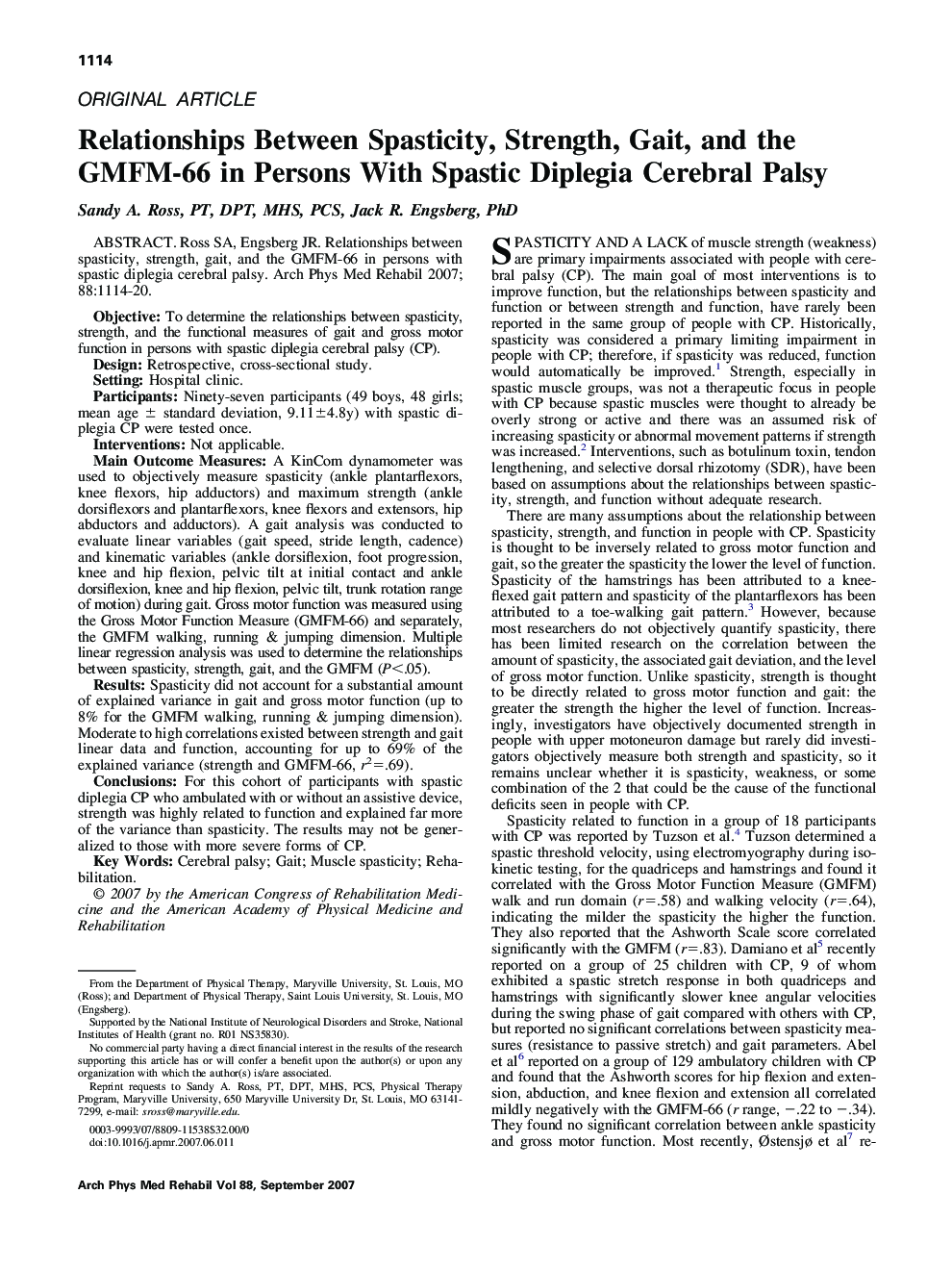| کد مقاله | کد نشریه | سال انتشار | مقاله انگلیسی | نسخه تمام متن |
|---|---|---|---|---|
| 3452766 | 1595789 | 2007 | 7 صفحه PDF | دانلود رایگان |

Ross SA, Engsberg JR. Relationships between spasticity, strength, gait, and the GMFM-66 in persons with spastic diplegia cerebral palsy.ObjectiveTo determine the relationships between spasticity, strength, and the functional measures of gait and gross motor function in persons with spastic diplegia cerebral palsy (CP).DesignRetrospective, cross-sectional study.SettingHospital clinic.ParticipantsNinety-seven participants (49 boys, 48 girls; mean age ± standard deviation, 9.11±4.8y) with spastic diplegia CP were tested once.InterventionsNot applicable.Main Outcome MeasuresA KinCom dynamometer was used to objectively measure spasticity (ankle plantarflexors, knee flexors, hip adductors) and maximum strength (ankle dorsiflexors and plantarflexors, knee flexors and extensors, hip abductors and adductors). A gait analysis was conducted to evaluate linear variables (gait speed, stride length, cadence) and kinematic variables (ankle dorsiflexion, foot progression, knee and hip flexion, pelvic tilt at initial contact and ankle dorsiflexion, knee and hip flexion, pelvic tilt, trunk rotation range of motion) during gait. Gross motor function was measured using the Gross Motor Function Measure (GMFM-66) and separately, the GMFM walking, running & jumping dimension. Multiple linear regression analysis was used to determine the relationships between spasticity, strength, gait, and the GMFM (P<.05).ResultsSpasticity did not account for a substantial amount of explained variance in gait and gross motor function (up to 8% for the GMFM walking, running & jumping dimension). Moderate to high correlations existed between strength and gait linear data and function, accounting for up to 69% of the explained variance (strength and GMFM-66, r2=.69).ConclusionsFor this cohort of participants with spastic diplegia CP who ambulated with or without an assistive device, strength was highly related to function and explained far more of the variance than spasticity. The results may not be generalized to those with more severe forms of CP.
Journal: Archives of Physical Medicine and Rehabilitation - Volume 88, Issue 9, September 2007, Pages 1114–1120